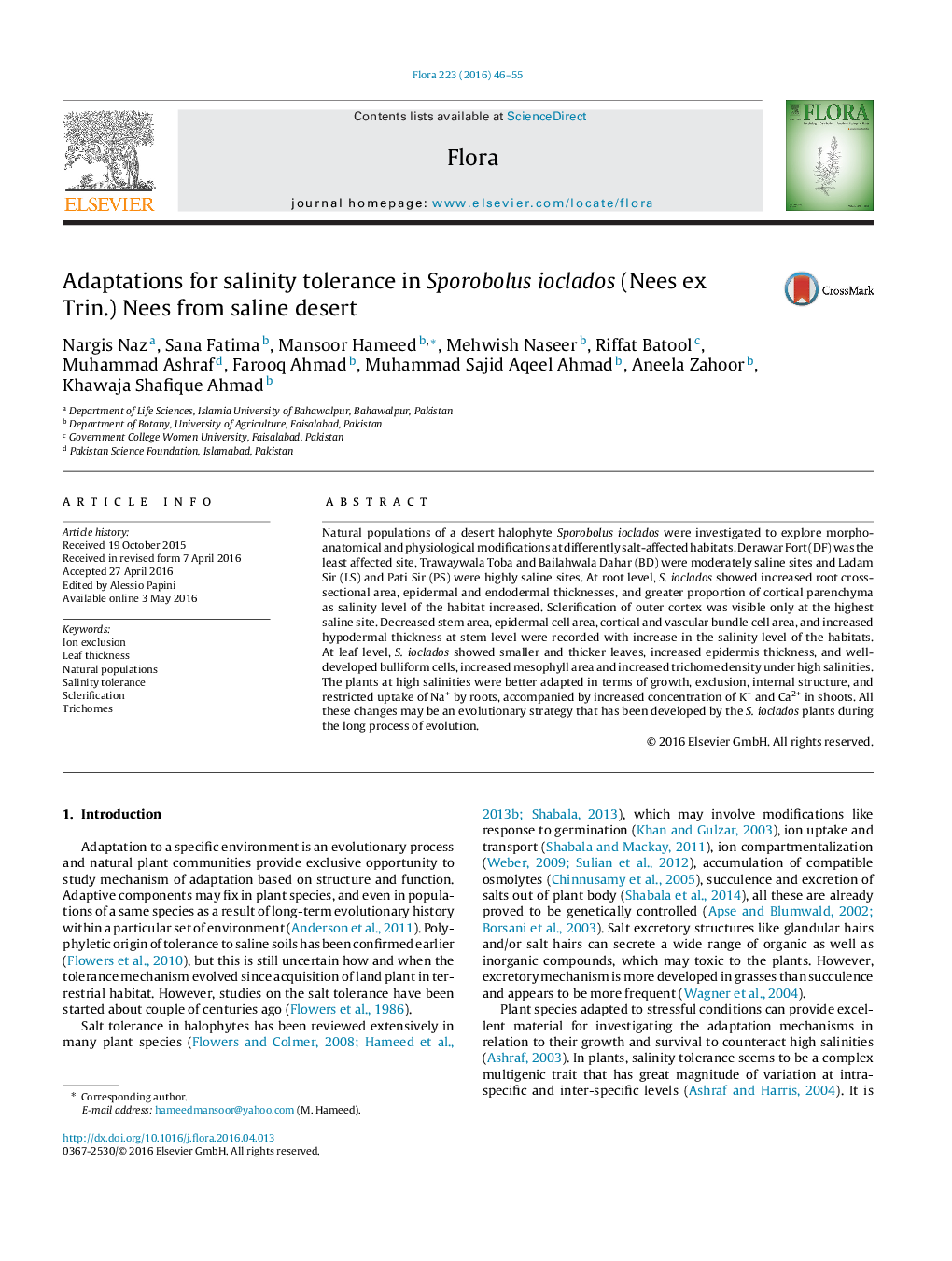| Article ID | Journal | Published Year | Pages | File Type |
|---|---|---|---|---|
| 8470273 | Flora - Morphology, Distribution, Functional Ecology of Plants | 2016 | 10 Pages |
Abstract
Natural populations of a desert halophyte Sporobolus ioclados were investigated to explore morpho-anatomical and physiological modifications at differently salt-affected habitats. Derawar Fort (DF) was the least affected site, Trawaywala Toba and Bailahwala Dahar (BD) were moderately saline sites and Ladam Sir (LS) and Pati Sir (PS) were highly saline sites. At root level, S. ioclados showed increased root cross-sectional area, epidermal and endodermal thicknesses, and greater proportion of cortical parenchyma as salinity level of the habitat increased. Sclerification of outer cortex was visible only at the highest saline site. Decreased stem area, epidermal cell area, cortical and vascular bundle cell area, and increased hypodermal thickness at stem level were recorded with increase in the salinity level of the habitats. At leaf level, S. ioclados showed smaller and thicker leaves, increased epidermis thickness, and well-developed bulliform cells, increased mesophyll area and increased trichome density under high salinities. The plants at high salinities were better adapted in terms of growth, exclusion, internal structure, and restricted uptake of Na+ by roots, accompanied by increased concentration of K+ and Ca2+ in shoots. All these changes may be an evolutionary strategy that has been developed by the S. ioclados plants during the long process of evolution.
Related Topics
Life Sciences
Agricultural and Biological Sciences
Ecology, Evolution, Behavior and Systematics
Authors
Nargis Naz, Sana Fatima, Mansoor Hameed, Mehwish Naseer, Riffat Batool, Muhammad Ashraf, Farooq Ahmad, Muhammad Sajid Aqeel Ahmad, Aneela Zahoor, Khawaja Shafique Ahmad,
